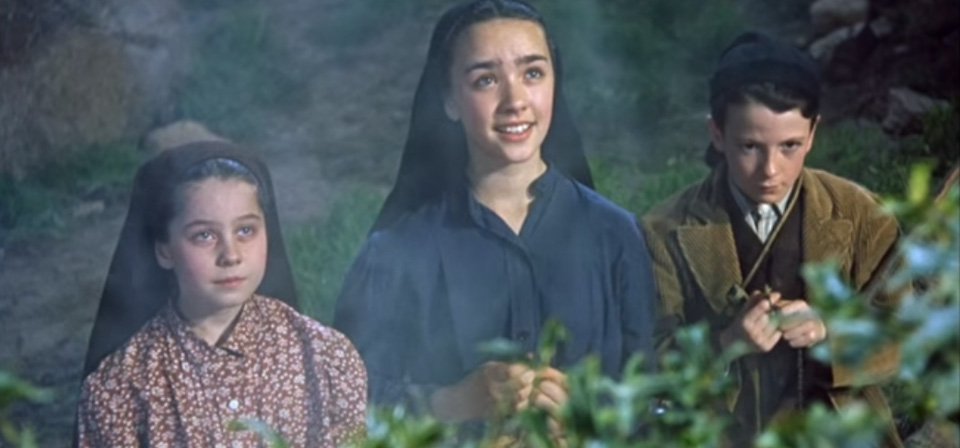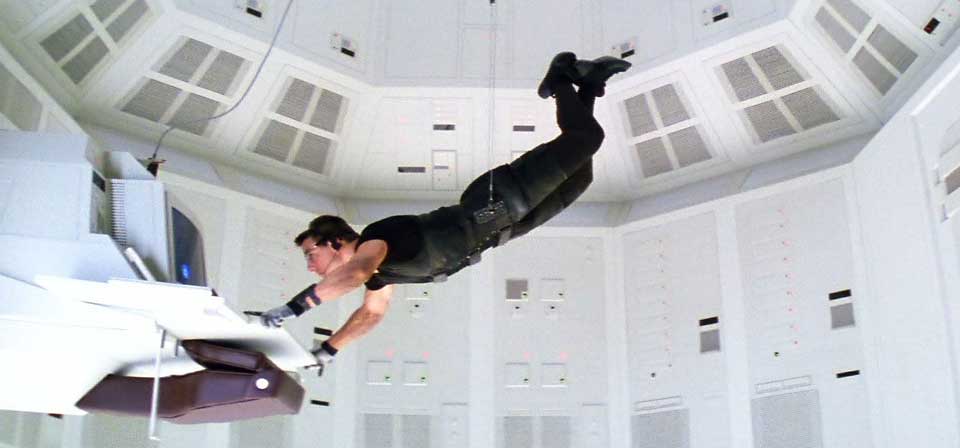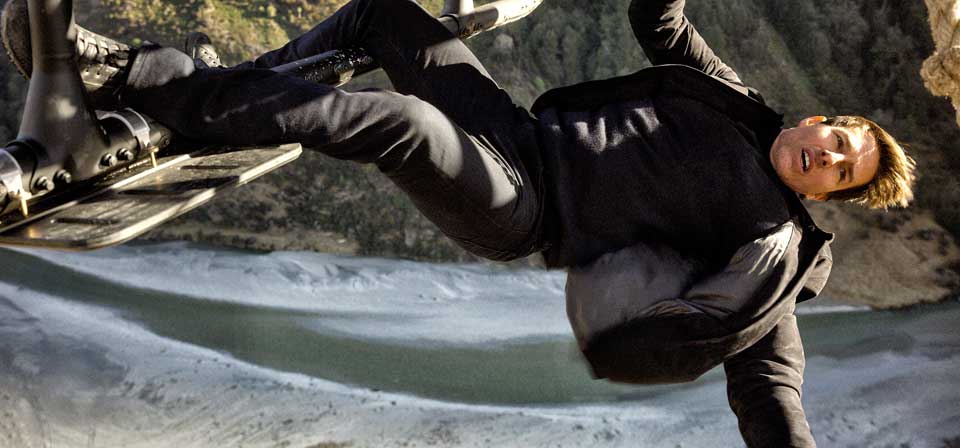Search Results
133 records found
Million Dollar Baby (2004)
By the film’s end, Frankie is faced with a choice that the priest says could lead to his damnation. The film makes the wrong choice seem right. But it leaves it an open question, I think, whether making that choice leads to redemption or damnation. Million Dollar Baby suggests, perhaps, that the right and most loving thing to do for someone else may entail one’s own damnation. This is very far from good way of looking at things. But it suggests a film that is less complacent, more thoughtful, less like smug propaganda than some of its detractors allege.
Millions (2005)
Millions is a rare and special family film: a moral parable rather than a morality tale; a film that combines high ideals and hard realities; a story of hope and faith in something more than Santa Claus. Which is not to say that Santa Claus, or rather St. Nicholas, doesn’t show up. But when he pops on a bishop’s mitre rather than the familiar red Santa hat, it’s clear we’re not in Hollywood movieland here.

Minions (2015)
Like the Penguins of Madagascar and Mater the tow truck, the Tic-Tac-shaped, banana-colored Minions join the ranks of popular comic sidekicks who have taken over their animated franchises. This is usually a sign of the end, although Cars 3 is on the way, and nobody has said Madagascar 4 isn’t happening.
Minority Report (2002)
Spielberg has always known how to manipulate an audience’s emotions, a knack he makes effective use of here. Humor alternates with squirming discomfort and emotional release as the director pokes fun of Cruise’s sex-symbol status in a couple of funny incidents, then leaves us wincing with a number of scenes involving eyeballs, or a character fumbling blindly for the one edible sandwich in a squalid refrigerator.
Minority Report: A View from the Red Carpet
“Hi, Internet,” Steven Spielberg says affably.
Miracle (2004)
Miracle manages the neat trick of establishing this game as much more than a game without making it all about politics or turning the Soviet players into ideological bad guys. Like Seabiscuit, with its Depression-era tale of a scrappy underdog racehorse taking on the much-favored champion thoroughbreds, Miracle establishes its setting in a time when American spirit is at a low ebb and people are ready to rally behind an underdog hero who can help them believe in comebacks and David-and-Goliath upsets.
Miracle at St. Anna (2008)
It’s a slightly heavy-handed misstep in a film that runs confidently though unevenly over a mountain of material, stepping right more often than it steps wrong over its 160 minutes. As a contribution and challenge to the World War II genre, Miracle at St. Anna compares reasonably well to most Hollywood efforts. As is often the case, Lee seems to relish biting off more than he can chew, and the ambition and scope of this effort is worth the bits that don’t quite fit.

The Miracle Maker (2000)
Fiennes sounds like a man improvising a public speech as he delivers long-familiar words about the house on the rock or the parable of the mustard seed. His Jesus is attractive, composed, commanding, and compassionate; he can rise to righteous anger (as at the cleansing of the temple), but has an acute sense of humor (seen particularly in satirical parables such as the log in the eye).

The Miracle of Our Lady of Fatima (1952)
Old-fashioned, reverent, basically faithful to the facts, The Miracle of Our Lady of Fatima never quite emerges from the shadow of the earlier, superior The Song of Bernadette, but it ups the ante with sterner opposition (militant Marxists rather than freethinking civil authorities) and a more dramatic climax.
Miracle of Saint Thérèse (1952)
Joan of Arc, the warrior-saint who wore men’s garb and was burned at the stake, would at first glance seem to be an odd role model for a girl whose greatest aspiration was to wear the habit of a cloistered nun and who died in the convent of tuberculosis.
The Miracle Worker (1962)
Beautiful black-and-white cinematography, startling performances, and harrowing physicality make The Miracle Worker an extraordinary experience.
Mirror Mirror (2012)
What’s the last movie you saw that created an imaginary world that was actually beautiful, bursting with color and beauty and inspiration? A world that reminded you of the feeling you had as a child the first time you saw Dorothy open that door on the Technicolor world of Oz? A world you would actually like to enter and walk around in?
Mirror Mirror and Fairy-tale Revisionism
I do take issue, though, with Hollywood’s current obsession with “dark,” “gritty,” “edgy” fare threatening to crush any sense of wonder and fantasy. What a joy, then, that Tarsem Singh’s Mirror Mirror offers a gorgeous, fantastic fairy-tale world bursting with extravagant imagination and splendor.

Miss Peregrine’s Home for Peculiar Children (2016)
1999 was a very good year for film, and how much more peculiar Tim Burton’s Miss Peregrine’s Home for Peculiar Children might have been had it come out that year, before the X-Men and Harry Potter franchises were launched in 2000 and 2001, respectively.
The Missing (2003)
In place of Ford’s iconic but Indian-hating cowboy hero, Howard gives us two white protagonists who are each, in their own ways, the antitheses of the John Wayne character.
The Mission (1986)
From the unforgettable opening sequence, with its stunning depiction of the martyrdom of a silent Jesuit missionary at the hands of equally silent South American natives, the film is shot through with piercing, haunting imagery, pictures of enduring imaginative force.

Mission: Impossible (1996)
As he did with The Untouchables, in Mission: Impossible De Palma borrows the marquee value of an earlier franchise as a pretext for a series of loosely strung-together set pieces, highlighted by a single dazzling sequence that’s better than the rest of the movie put together.

Mission: Impossible – Fallout (2018)
Mission: Impossible – Fallout completes possibly the most improbable cinematic hat trick in Hollywood history: An unpromising series that began with three patchy, uneven entries has now produced three terrifically entertaining ones.

Mission: Impossible – Ghost Protocol (2011)
Brad Bird’s Mission: Impossible - Ghost Protocol is so preposterously entertaining that it makes watching other recent Hollywood action spectacles feel like work. What in the last few years even compares to it?
Mission: Impossible – Ghost Protocol [video]
Here’s my 30-second take on Mission: Impossible – Ghost Protocol.
Recent
- Benoit Blanc goes to church: Mysteries and faith in Wake Up Dead Man
- Are there too many Jesus movies?
- Antidote to the digital revolution: Carlo Acutis: Roadmap to Reality
- “Not I, But God”: Interview with Carlo Acutis: Roadmap to Reality director Tim Moriarty
- Gunn’s Superman is silly and sincere, and that’s good. It could be smarter.
Home Video
Copyright © 2000– Steven D. Greydanus. All rights reserved.